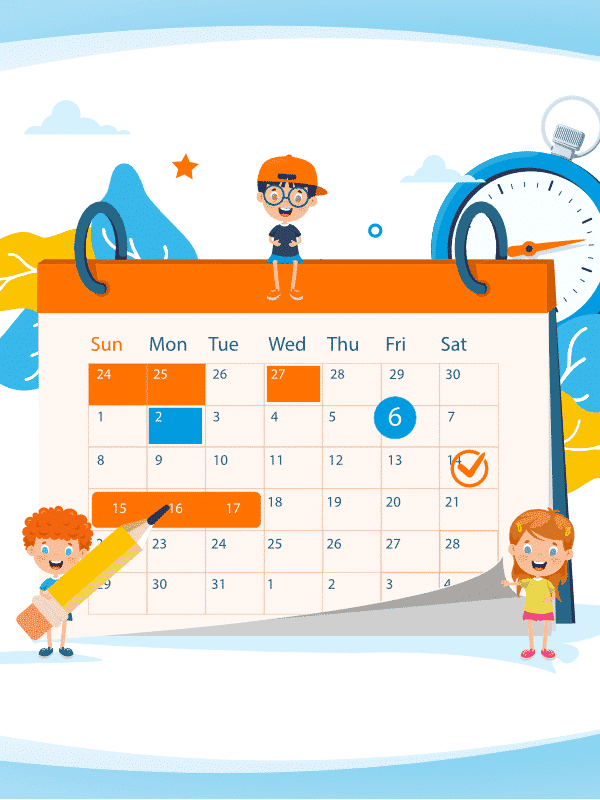Looking for fun ways to help your kids learn Spanish and practice their skills outside school can be tough. There are many apps out there that promise many things, but are they real? Do they truly help your children improve their Spanish? You might have already experienced some disappointments and that probably makes you scared of trying something new.
But have you heard of FabuLingua? I’m Micah Bellieu, and as a mom, polyglot and founder of TruFluency Kids Spanish immersion school, this is a very important topic for me. And I completely understand your worries with language learning apps. So to help you make the decision if this is the right fit for you and your kids, here’s my FabuLingua Mobile Game review.
What is FabuLingua?
FabuLingua is a super cool mobile game for kids from 2 to 10 years old. But wait, it’s much more than that. It’s a fun way to teach children Spanish. That’s right! Through the game, your kids will acquire the Spanish language.
As a language expert and mom, I really value that, because kids truly learn better while having fun. That’s also our approach at TruFluency Kids, to create fun activities for students to enjoy learning.
They also have stated they use the most recent advancements in science for learning a second language in a better way. As a parent raising a bilingual kid, I really respect that.
In conclusion, they want their teaching method and game to be “fun, interactive, comprehensible and compelling”.
What Does FabuLingua Offer?
Here are some things that FabuLingua offers and that you’ll find in their game. I find these very important and super cool:
- A language learning game based on science
- Adventure so kids feel like explorers
- Stories by Latin American and Spanish authors and illustrators
- Their very own Magical Translations method
- Spanish Only mode for those kids that already know Spanish and feel confident in it
- Illustrations
- Cute characters and avatars
- Dynamism
- Magic sticker book
Comprehensible Input
We’ve told you already that they use science for their language learning mobile game. But what do they specifically use? Well, they teach through comprehensible input, a technique developed by linguist Dr. Stephen Krashen.
Comprehensible input is a technique to teach others a new language using input that the learners can understand, even when they don’t understand every single word or phrase or structure.
So even if your kids might not know everything, they will comprehend the message. It’s like learning through context. An example of this could be books and reading; kids can understand more about the story through the pictures and illustrations.
This input must be very interesting, so it doesn’t feel boring and doesn’t feel like a school lesson or study time. This way the students will almost not notice anymore that the input is in a new language that’s not their mother tongue.
That’s exactly what the FabuLingua app does. In their game, they show interactive and illustrated Spanish stories for kids. So kids will have fun acquiring Spanish and it won’t feel like studying.
They also have their very own method called Magical Translations. This consists of the kid seeing the text of the story in Spanish, not in any other language. However, the narration will alternate between Spanish and English. So your kids truly understand everything. It’s FabuLingua’s very own way of comprehensible input.
Give Your Child the Gift of Spanish!
How Does FabuLingua Work?
In FabuLingua’s mobile game your children will be guided by Zorri the fox. He will guide them through FabuLinga’s island and all the stories in it. I find this to be super cute and engaging for kids; they’ll love to have an adorable fox as their guide.
I also love that they work with stories! Because children adore books, reading, and all the magical worlds and things that come with it. So it’s one of the best ways to engage them in language learning. We also work with stories at TruFluency Kids.
The best of all is that the stories are interactive! How? These stories have a learning path with audio and speaking exercises with which kids will truly comprehend the story and learn from it.
At the same time, each learning path has 4 modes and 4 mini games. The way these works is you do a mode, then a mini game, then another mode, and another mini game. As you complete these modes, you’ll collect gold keys. Those keys will open a treasure chest that has gifts, like cards and stickers for their “Magic Sticker Book”.
When you complete a new mode in a story, you’ll get a diamond key. With this diamond key you can open a discovery chest that has a “magical compass”. And magical compasses will help you find a new location to play in.
In every new location, kids will meet new characters and stories. How cool! There’s always something new to explore and discover!
I really think all of this will spark interest in your kids and the desire to keep moving forward, because they’ll want to unlock new locations and discover new things.
FabuLingua’s Modes
There are 4 modes in the FabuLingua game, which are like the levels:
1. Magical Translations Mode
This is the mode in which your children will be able to read the text of the story only in Spanish. But, at the same time, they’ll hear every phrase being read first in Spanish and immediately in English.
This will help them truly understand everything and start figuring out the meaning of some Spanish words.
A very cool thing about this is that if your kid has a solid Spanish base already, they can switch to “Spanish only” for a more challenging experience and more improvement.
2. CopyCat Mode
Now, it’s time for the kids to practice proper pronunciation. To do this, the app has the modality of allowing kids to record their voices reading the story.
They’ll first hear the narrator read a part of a phrase or a part of the page in Spanish. Then they’ll record themselves reading that same phrase. Then they’ll listen to the narrator once again, now reading another phrase. The kids now will record their voices reading that other phrase. And so on, until the children finish reading the whole page or phrase.
When they’re done, they can hear themselves reading the whole thing. This way both kids and parents can see how well they did it. Isn’t this amazing? I think so! It’s a great way to hear how to correctly pronounce the words and do it. They’ll learn through imitation.
3. Spanish Only Mode
This is a very cool mode, but a challenging one. But don’t worry, that’s why kids were prepared with the first two modes.
Here, children will switch the story to the “Spanish only” mode, which means they’ll read it and hear it only in Spanish. No more English translations.
This way, they’ll reinforce the knowledge and improve even more.
Now, do I think kids were really prepared for this step? That’s up to you, honestly. As the parent or tutor, you’ve watched them play, so you probably have a better idea of your kids’ Spanish learning journey. How well did they pronounce the words during the second mode?
If they felt like they needed more pronunciation practice, did they repeat the game or did they immediately pass onto the next mode? Do you see your kids can understand many of the words and phrases now that they’re only in Spanish?
It’s okay if they still have many questions and don’t understand much in Spanish. There’s no shame in that. They can simply play the other modes again.
Though, speaking in general, I think kids can arrive at this mode very well prepared. Because they already had English translations in the first mode, which can help a lot to introduce them to the language and the stories. Plus, they already practiced themselves.
Let’s not forget that even if they feel ready for Spanish only, they might still have some doubts. Nobody knows everything. If they touch a word, they’ll get the translation and the syllabic breakdown. This can help tons! They might also understand a word by the context.
4. Read By Myself Mode
Now, it’s time for the kids to be the narrators! They’ll get to record their voices reading the story all by themselves! There will be no help from the narrator this time.
And do I think kids are ready for this? Once again, this is mostly up to you and your kid. How much did they practice their pronunciation in mode 2? How well did they do?
Though, in general, I do think this is a great last mode, and they should be ready for this. They had tons of practice with the same story before and they already had an exercise to start speaking and reading it.
FabuLingua’s Mini Games
The mini games are exercises created for kids to reinforce what they learned during a specific FabuLingua mode. Every game is design to work on one particular language skill:
- Comprehension
- Pronunciation
- Spelling
- Grammar
But don’t think they’re monotonous or dull. The fact that they’re designed as games make them super fun, so children won’t really think it’s another boring exercise.
We really feel identified with what we do at TruFluency Kids, because we like for our students to play games during our classes. Kids will enjoy playing, because it’s fun, and it helps with Spanish immersion. We know how helpful this can be for Spanish acquisition!
What I Liked the Most About FabuLingua
I really enjoyed the illustrations. They’re very colorful and look like drawings or paintings. That will definitely attract a kid’s attention.
One of the things that I liked the most were the stories. Like I mentioned before, learning a language through books, reading and stories is one of the best things to do for our children. They’ll be so immersed in the story that they won’t notice they’re acquiring a new language. They won’t feel like they’re at school, sitting down memorizing vocabulary sheets!
Bonus points for knowing how to use technology to their favor! Let’s be honest, many children nowadays are very into technology, like apps and online games. FabuLingua found a way to entertain the kids, while also helping them learn something that will benefit them a lot now and in the future.
Complement Your FabuLingua Mobile Game with TruFluency Kids
So far, we’ve seen that FabuLingua’s mobile game is an amazing tool for a fun language learning experience. I strongly believe it can also be a good mix with our TruFluency Kids Spanish immersion classes. Think about it: We’ve noticed we have things in common, like our goal to make Spanish learning fun for kids.
We also like to teach through immersion activities, like reading, storytelling, singing, doing crafts, cooking and playing games. So, kids will acquire the language naturally by being engaged in common, but cool activities.
Oh, and don’t worry about the speaking part. We encourage children to speak in every single lesson. So they practice their pronunciation and conversation skills. So whatever they learn during their time playing with FabuLingua, they’ll be able to use it in our classes. It’s the best way to achieve Spanish fluency.
Why don’t you take a trial class now? There are no more than four to six students per trial class. After it, you can join a parent Q & A to answer all your questions. More importantly, you’ll see what a great complement we can be to FabuLingua!


